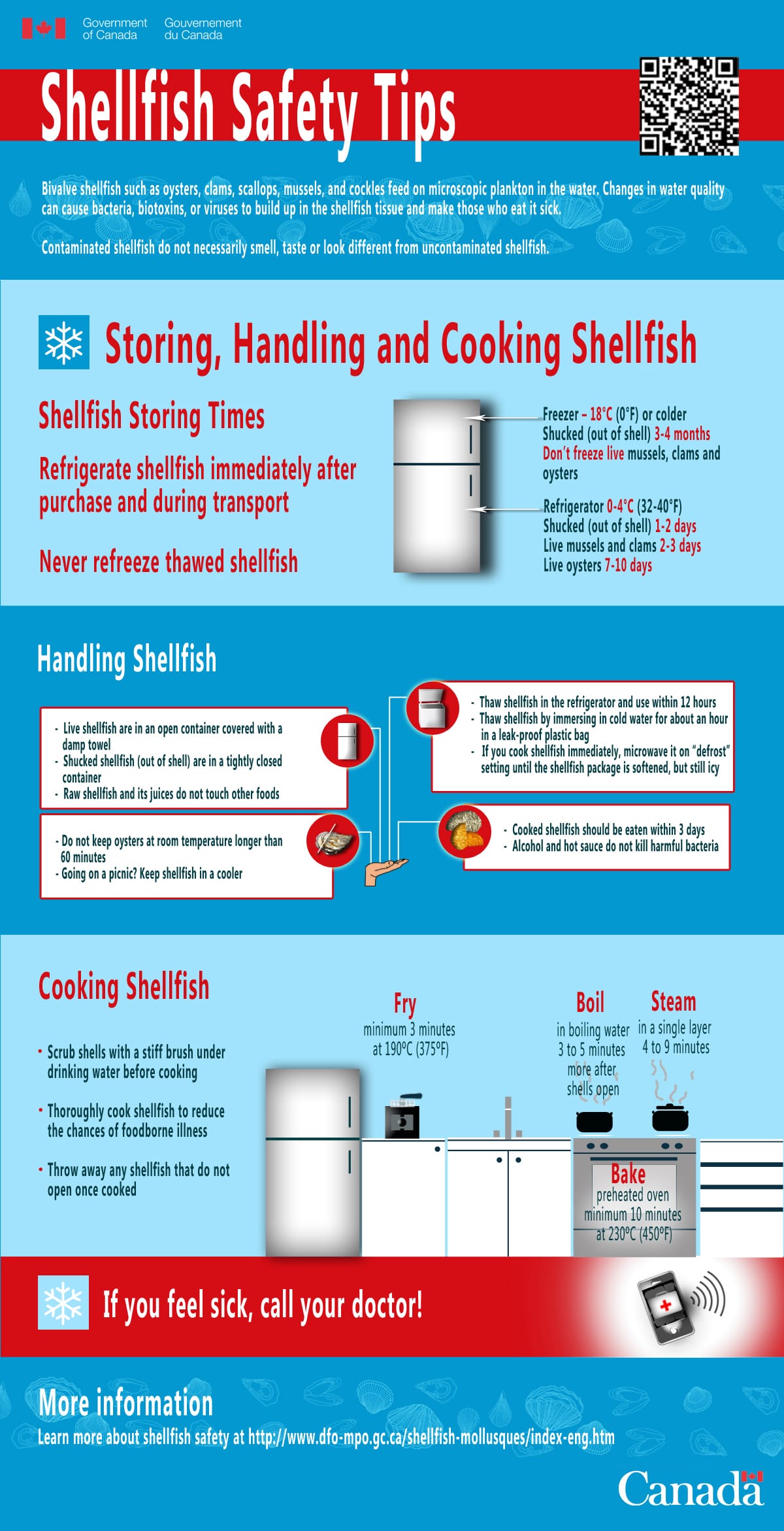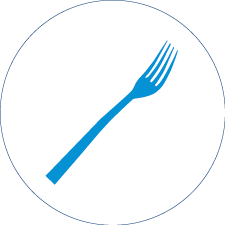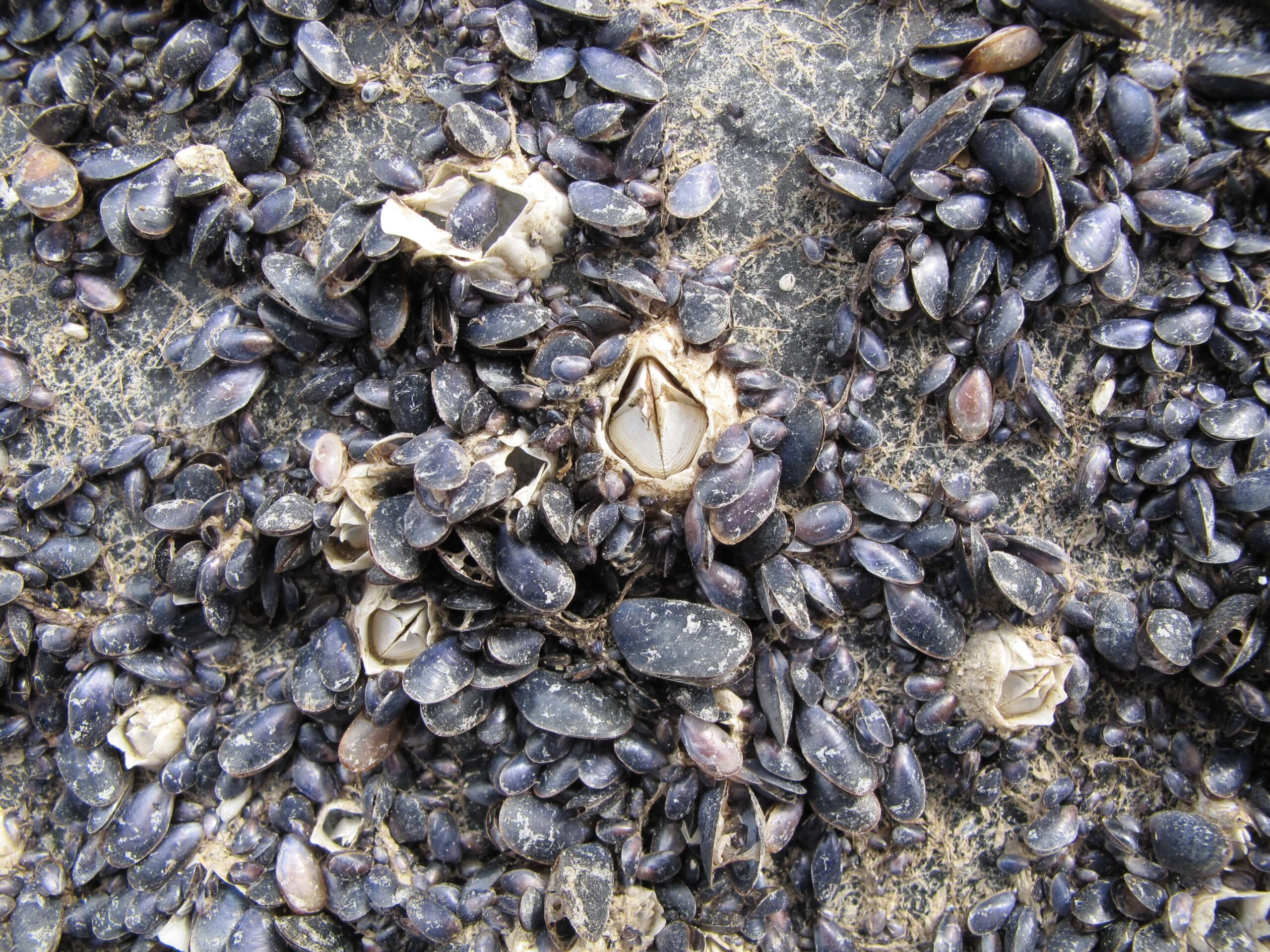
SIZE:
1 to 10 cm in length.
LIFE EXPECTANCY:
Up to 24 years.
LIFE CYCLE:
Mussels have distinct sexes. Fertilization takes place in the water between May and August when mussels release their reproductive cells. After just a few hours, the larvae are born and swim in the water for three to four weeks before being able to attach themselves to a solid substrate. Once formed, its shell grows along with its soft body. The larger the mussel, the less easily it can detach itself from its anchor. As an adult, it will cling to one spot permanently.
Exceptional filter feeders
Adult mussels, around 30 mm in size, can pump 4 L of water per hour. They are the most efficient filter feeders. This also means that they are also the mollusc species that absorbs the most toxins. Do not panic, however! Controls on mussels destined for consumption are strict and very regular.
The shell is formed by two black calcareous valves, having a blue tinge, that protect its meat. The female’s meat is pink or orange, whereas the male’s is white. The mantle builds the shell and protects the mussel’s organs. The byssal threads, which are adhesive, are also known as the mussel’s beard. They enable the mussel to attach itself to the substrate and thus resist water movement. The mussel’s foot is made up of muscles that enable it to move, albeit very slowly.
Coastal zone, in shallow, temperate waters, on a support to which it can affix itself.
The blue mussel is highly tolerant of variations in temperature and salinity.

Blue mussels gather on supports.
Credit: Richard Larocque, photo taken at Anse-des-Roches, at 20 m depth.
PREYS:
Plankton
Mussels filter water to feed on plankton.
PREDATORS:
Crustaceans
Sea stars
Halibut
Flounder
Seabirds
MACHINES:
Sea farming (mussel farming).
REGULATIONS:
The blue mussel used to be the star species of Québec mariculture. However, since the 2010s, sea ducks, which are very fond of this mollusc, have been giving mussel farmers a hard time. So much so that in 2024, few mussel farmers remain in Québec.
Blue mussel is a Smarter seafood-listed species.
BENEFITS:
Low in calories and saturated fat. One of the richest foods in calcium and magnesium.
Also rich in protein, vitamins B12 and C, iron, zinc and antioxidants.
LET’S COOK:
Iodized with a sweet flavour and nutty aftertaste. Farmed mussels have softer, plumper and paler-yellow meat than wild mussels. They are also less likely to contain sand.
OUR CULINARY ADVICE:
- Before cooking
- If the byssal threads have not been removed from the mussels, this should be done before you start cooking. Simply pull them off.
- Sort the mussels. Discard any that have broken shells, are open or won’t close when lightly tapped or shaken.
- Preparation
- Mussels are cooked when their shells are fully open.

To avoid poisoning, it is important to always follow safe shellfish storage, handling and cooking practices.
Source: DFO






